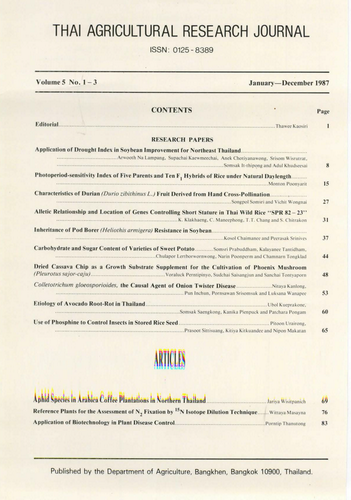Reference Plant for the Assessment of fixation by N Isotope Dilution Technique
Keywords:
Assessment of fixationAbstract
Reference plants or ‘standard’ plants play an important role in the assessment of nitrogen fixation by the <sup>15</sup>N isotope dilution technique, in both legumes and non-legume nitrogen fixing plants. The principle of this technique is based on differences in dilution of <sup>15</sup>N isotope between the N<sub>2</sub> fixing plant and the reference plant. In practice both plants receive the same<sup>15</sup>-N-labelled fertilizer under the same growing conditions. Throughout growth the reference plant obtains nitrogen from the soil (<sup>14</sup>N) and labeled fertilizer (<sup>15</sup>N), while the N<sub>2</sub> fixing plant obtains nitrogen from the soil (<sup>14</sup>N), labeled fertilizer (<sup>15</sup>N) and atmosphere (<sup>14</sup>N) throng fixation. There will be dilution of <sup>15</sup>N isotope will be observed in the N<sub>2</sub> fixing plant. From the higher percentage of <sup>15</sup>N in the reference plant relative to the N<sub>2</sub> fixing plant, and the total dry matter and total N content of the N<sub>2</sub> fixing plant, the amounts of N<sub>2</sub> fixed can be calculated. However, the precision of this technique depends to a great extent on the reference plant selected. The evaluation of potential reference plants for particular soil climatic conditions is important for the value and accuracy of the technique.
References
-
Downloads
Published
How to Cite
Issue
Section
License

This work is licensed under a Creative Commons Attribution-NonCommercial-NoDerivatives 4.0 International License.
Thai Agricultural Research Journal



